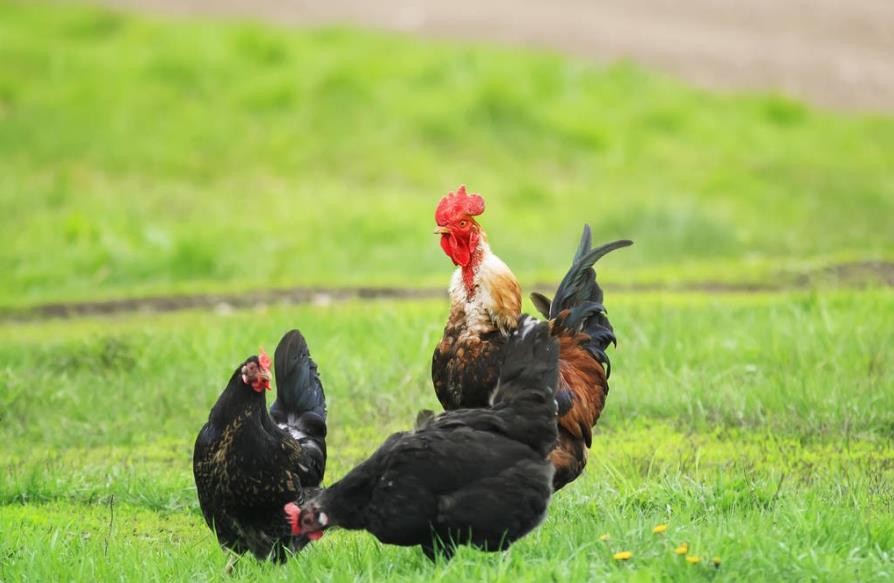
News briefing: Chicken infectious disease

News briefing: Chicken infectious disease
Newcastle Disease Virus (NDV) , also known as Asiatic chicken plague, is a highly contagious, acute, and virulent disease caused by Newcastle Disease Virus, the main symptoms were dyspnea, fever, nerve disorder, neck twisting, severe diarrhea, mucous membrane and serosa bleeding. The disease is characterized by rapid transmission, wide prevalence and high mortality rate. It is one of the most serious z diseases in chicken industry.
1. Popular features
The main source of infection of the disease is infected chicken and infected chicken feces and oral mucus. Virus-contaminated feed, water and dust through the digestive tract, respiratory tract or conjunctival infection of susceptible chickens is the main mode of transmission. Air and drinking water transmission, human, apparatus, vehicles, feed, bedding (Rice Husk, etc.) , seed eggs, chicks, insects, rodents mechanical carrier, as well as the carrier pigeons, sparrows are of great epidemiological significance to the disease. The disease can occur in all seasons of the year, to winter and spring cold season more popular. Chickens of all ages, breeds and sexes can be infected, but the morbidity and mortality of chicks is significantly higher than that of, older chicks. Purebred chickens are more susceptible and have a higher mortality rate than crossbred chickens. Some native chickens and ornamental birds (such as budgerigars) are quite resistant to the disease, often recessive or chronic infection, and become important carriers and disseminators of the virus. In addition, people, wild birds, slaughtered sick chickens, dead chickens with virus or unpasteurized poultry products are often an important factor in the occurrence of the disease.
2. Clinical symptoms
(1) acute type Z usually occurs at the early stage of the epidemic, with a very short course of disease and sudden death without obvious symptoms. The performance waste food, exhaustion, not standing, crown beard was purple, Faeces Thin Green or yellow-white, some sick chicken dyspnea, more than a few days of death.
(2) acute, rising body temperature up to 43 ~ 44 °C; loss of appetite; lethargy, loose feathers, eyes closed and closed in a comatose state, wings and tails drooping, head drooping or extending under the wings; Cockscomb, fleshy beard purplish red or purplish black; difficulty in breathing, open mouth to breathe from time to time, when lifting chickens upside down, a great deal of yellowish acid and smelly sticky liquid comes from their mouths; their crop is filled with gas or liquid; their diarrhea is yellowish-green or yellowish-white albumen-like faeces, sometimes mixed with a small amount of blood and having a foul smell; Laying hens lay less or stop, and see the increase in soft eggs. The course of disease is 3 ~ 5 days, and the mortality is high.
(3) subacute or chronic, also known as atypical or Mild Newcastle disease. At the beginning of the disease and acute, mild symptoms, soon subside, neurological symptoms, a limb or limb paralysis, lame or can not stand, wing paralysis droop. Some movement disorders, often prostrate circle. The course of disease can be as long as 1 ~ 2 months, except a few can be recovered, most of the reasons such as difficulty in feeding eventually died.
3. Anatomical changes
The main pathological change of diseased chickens was extensive bleeding. Papilla or Papilla punctate hemorrhage, or between glandular stomach and muscular stomach, between esophagus and glandular stomach hemorrhage spot or bleeding zone, sometimes forming small depression ulcer, subcuticular hemorrhage or ulcer; DUODENUM and the entire intestinal Mucosa were punctate, flake or diffuse bleeding, longer course of the disease often appear ulcers, such as Jujube pit; Cecum, tonsil swelling, bleeding, necrosis; rectal mucosal bleeding; coronary fat spot bleeding; Abdominal fat bleeding.
4. Prevention and treatment
(1) establish and implement various prevention systems, do a good job of immunization, regular disinfection, strict quarantine.
(2) once the chickens have this disease, the suspicious chickens should be burned or buried deeply, and the contaminated feathers, bedding grass and excrement should be buried or burned deeply. Seal off the chicken farm, prohibit the transfer or sale, immediately and thoroughly disinfect the environment, and give the chickens double dose of I series vaccine emergency inoculation; if there are chickens in the chicken farm, should be strictly isolated to avoid I series vaccine infected chickens. After a case of Z treatment for two weeks, and through strict disinfection, the blockade can be lifted and re-entry of chickens. The occurrence of this disease should be in accordance with the “Animal Epidemic Prevention Law”and its relevant provisions. Culling sick and poultry in flocks, burying or burning carcasses; harmless disposal of contaminants; and thorough disinfection of contaminated utensils, articles and the environment. Immediately and urgently vaccinate the healthy chickens in the epidemic area and the threatened area.
Date of opening:1970-01-01 Shop address: Main products: Store certification time:1970-01-01 08:00:00
Store Name: Principal: Contact number: email: